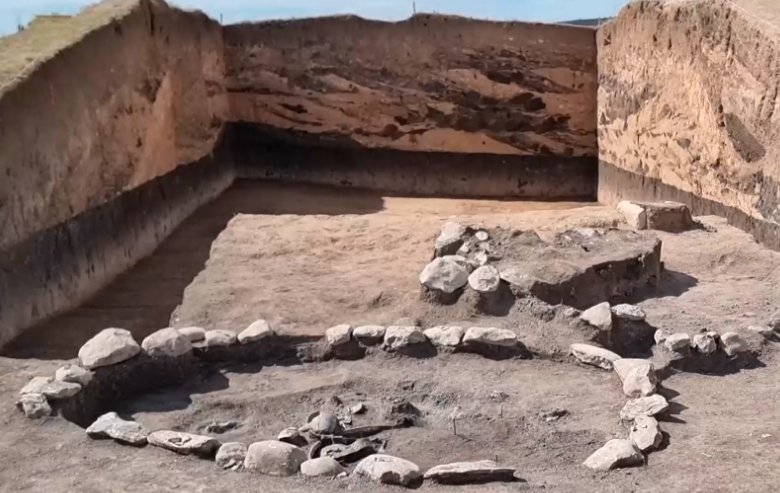Archaeologists in Bulgaria have made a groundbreaking discovery, unearthing a well-preserved Roman chariot in a necropolis near Varna. This remarkable find, dating back to the 2nd and 3rd centuries CE, was uncovered during excavations for a gas pipeline project. The chariot, along with several mysterious stone structures, offers a fascinating glimpse into the Roman era and the burial practices of the time. This discovery marks the first of its kind in the Varna region, shedding new light on the area’s historical significance.
Discovery of the Roman Chariot
The excavation team, led by Dr. Vladimir Slavchev from the Regional History Museum, made the astonishing discovery while investigating a burial mound between Vetrino and Provadia. The mound, initially believed to be from the Bronze Age, revealed its Roman origins through the artifacts found within. Among these artifacts was a two-wheeled Roman chariot, known as a “biga,” which was used for sports, transportation, and ceremonial purposes.
The chariot was found alongside the remains of a horse, indicating its possible use in war or ceremonial events. The preservation of the chariot is remarkable, with many of its components intact, allowing for potential reconstruction for public display. This find is particularly significant as it is the first Roman chariot discovered in the Varna region, highlighting the area’s historical importance during the Roman period.

In addition to the chariot, the excavation uncovered several cremation pits and grave goods, including ceramic and glass vessels, iron and bronze artifacts, and Roman coins. These items provide valuable insights into the burial practices and social status of the individuals interred in the necropolis.
Mysterious Stone Structures
One of the most intriguing aspects of the discovery is the presence of mysterious stone structures surrounding the burial mound. These structures, elliptical and round in shape, were closely packed together and constructed in multiple phases. Despite thorough investigation, archaeologists have found no evidence of human destruction or looting, suggesting that the structures have remained undisturbed for centuries.
The purpose of these stone structures remains a mystery. They were built using marl, a carbonate-rich soil, and expanded over time to include dome-shaped formations. The exact function of these structures is still unknown, but their construction and preservation offer a unique glimpse into the architectural practices of the time.
Dr. Slavchev and his team continue to study these structures, hoping to uncover more information about their purpose and significance. The discovery of these stone formations, along with the chariot, adds a new dimension to our understanding of the Roman period in the Varna region.
Implications for Historical Research
The discovery of the Roman chariot and stone structures in Varna has significant implications for historical research. It provides new evidence of Roman influence in the region and offers insights into the burial practices and social structures of the time. The artifacts found within the necropolis, including the chariot, coins, and grave goods, help to paint a more detailed picture of life during the Roman period.
This find also underscores the importance of rescue excavations in uncovering historical treasures. The excavation was prompted by the construction of a gas pipeline, highlighting the need for careful archaeological investigation in areas of development. The collaboration between Bulgartransgaz and the National Archaeological Institute with Museum – BAS has been instrumental in preserving and studying these valuable artifacts.
As research continues, the team hopes to learn more about the individuals buried in the necropolis and the broader historical context of the site. The potential reconstruction of the chariot for public display will also provide an opportunity for the public to engage with this fascinating piece of history.
The discovery of the Roman chariot and mysterious stone structures in Varna is a landmark find that enriches our understanding of the Roman period in Bulgaria. The ongoing research and preservation efforts will continue to shed light on this remarkable chapter of history.













